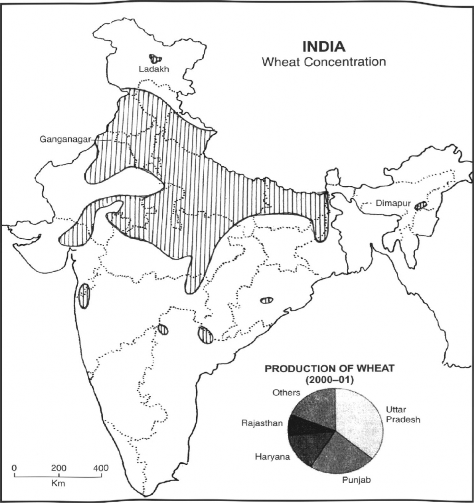Green Revolution and Rotation of Crops
In India, rotation of crops is practiced by most of the farmers. The main objective of rotation of crops is to obtain higher agricultural returns on the one hand and to maintain the soil fertility on the other. Thus, rotation of crops helps in making agriculture sustainable. The importance of rotation of crops is more in the areas where the farmers grow two or more than two crops in a year in the same field.
Prior to the Green Revolution most of the Indian farmers were subsistent in character, growing crops mainly for the family consumption. In the areas, where Green Revolution is a success, agriculture has become agri-business and market oriented in which the farmers are concentrating on a few number of crops. Most of the farmers are devoting their lands in the Green Revolution areas to rice in the kharif season and wheat in the rabi season. Both these staple crops arc soil exhaustive. The area under leguminous crops has shrunk and the farmers have given up their empirical practice of fallowing to recuperate soil fertility. The rotation of crops of some of the villages from western Uttar Pradesh and Haryana, where Green Revolution is a success have been given in Table 9.12.
Table 9.12 Traditional Rotation of Crops (1960-65) in Banhera (Tanda) Village, District Hardwar
Year | Kharif Season (Mid-June to Mid-October) | Rabi Season (Mid-October to Mid-April) | Zaid Season (April-June) | No. of days land left fallow |
1960 | Millet/fodder/rice | Gram | Fallow | 90 |
1961 | Fallow | Wheat | Fallow | 210 |
1962 | Millet/fodder/rice | Gram | Fallow | 90 |
1963 | Fallow | Wheat | Fallow | 210 |
1964 | Mille t/fo dd e r/ric e | Gram | Fallow | 90 |
1965 | Fallow | Wheat | Fallow | 210 |
Source: Field work by the author, 1960-65.

Fig. 9.13 Wheat Concentration (2005-06)
It may be observed from Table 9.12 that fallowing was an important practice each year in Western Uttar Pradesh before the adoption of the High Yielding Varieties. Moreover, wheat and gram (a leguminous crop) used to be sown in the same field in alternate years. This type of rotation of crops was helpful in maintaining the fertility of the soil.
Under the pressure of growing population on arable land, the adoption of new seeds have resulted in a new pattern of rotation of crops, which has been given in
